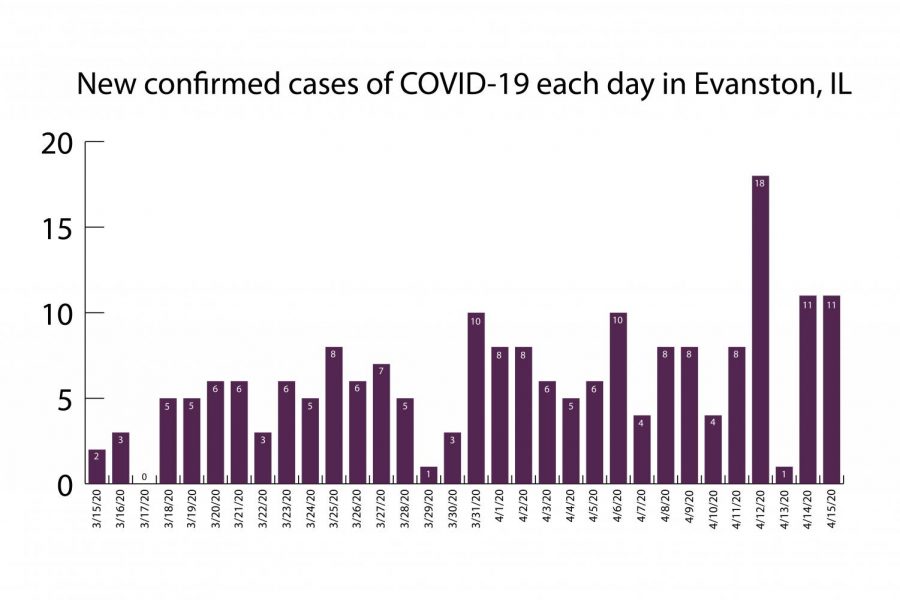Evanston is ‘flattening the curve,’ experts say
April 15, 2020
City public health manager Greg Olsen said that data shows the city is successfully ‘flattening’ the pandemic curve.
As of Wednesday afternoon, there are 197 confirmed COVID-19 cases in Evanston. The number of new cases each day has fluctuated. For example, the city reported 18 new cases on Sunday but just one case Monday.
“The stay at home order — that’s done a tremendous effort,” Olsen said. “You can see it in the non-exponential growth of our cases.”
On March 27, U.S. Surgeon General Jerome Adams identified the Chicago area as a COVID-19 “hot spot.” A hot spot is defined by the number of cases per capita.
Noelle Sullivan, associate professor of instruction in global health at Northwestern, said that differences in population density are indicative of why Evanston has a lower infection rate than Chicago.
Sullivan said northern Evanston, which has a relatively low population density, likely has lower rates of infection than southern Evanston and Rogers Park, where residents live in closer proximity. She said residents in densely populated areas often “can’t afford to stay home” as they face rent payments and grocery bills, which may lead to higher infection rates.
According to Feinberg School of Medicine professor Michael Ison, nursing homes and retirement communities can have high infection rates.
“Retirement homes have been recognized as the perfect storm: close living quarters in addition to a population older with underlying medical conditions,” Ison said.
In Evanston, three out of the five COVID-19 deaths were residents at local retirement community Three Crowns Park. Three Crowns did not respond to multiple requests for comment.
Though considered a potential hotspot, retirement communities are unlikely to facilitate COVID-19’s spread. Because of the stay-home-order, communities are isolated and restricting non-essential visitors, Ison said. In Evanston, local retirement communities are implementing COVID-19 precautions.
Social distancing and the stay-at-home order are reducing the spread of COVID-19 in Chicago, Chicago Mayor Lori Lightfoot announced at Wednesday’s press conference. A month ago, cases were doubling every two to three days but are now doubling every 12 days, according to data from the Lightfoot administration.
Still, Lightfoot said social isolation efforts will need to continue for the pandemic to end.
“As encouraging as these numbers are, the light at the end of the tunnel is only a pinprick, and we will need continued diligence and social compliance before we can bend the curve and outrun this crisis,” Lightfoot said. “It is imperative we continue to be safe and act responsibly, as it is truly a matter of life and death.”
Sneha Dey contributed reporting.
Email: anikamittu2023@u.northwestern.edu
Twitter: @anika_mittu
Related Stories:
— Retirement communities, home care facilities implement COVID-19 precautions
— Evanston’s COVID-19 death toll reaches 5; fewest new cases in weeks



